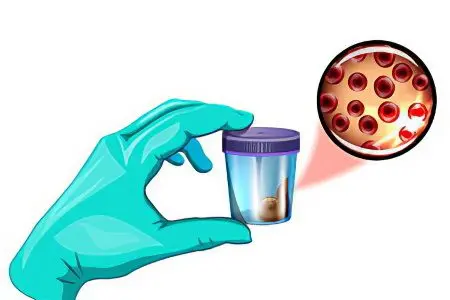
The study of fecal masses for the presence of occult blood in them is an important step in the diagnosis of inflammatory, parasitic, autoimmune and degenerative-dystrophic pathologies of the gastrointestinal tract, as well as an affordable way to timely detect oncological diseases of the digestive system. Noticing blood in their feces, visible to the naked eye, most people rush to see a doctor, realizing how serious this signal of trouble is.
But hidden blood can indicate no less formidable diagnoses, moreover, when the disease is still at an early stage of development, and the chances of a successful recovery are much greater. That is why, in the presence of the first suspicious symptoms, it is necessary to obtain qualified medical advice and pass all the necessary tests. And people over the age of 50 with a history of colorectal cancer should have a fecal occult blood test every year, as this simple measure can save lives in some cases.
Many pathologies of the gastrointestinal tract, including ulcerative colitis and malignant tumors of the intestine, for the time being do not bother the patient with severe discomfort. But the destruction of healthy tissues is already taking place, therefore, blood is released, which cannot yet be visually detected in the feces, but it is quite possible to do this with the help of special laboratory samples. Today we will tell you what a fecal occult blood test shows, how to prepare for the study and what diet you need to follow, how to collect and donate material correctly, what a positive and negative result indicates, in which cases it can be false, and what methods of determining occult blood in the feces are most accurate.
Hidden blood in stool – what does it mean?

A certain amount of blood can normally be present in the feces – no more than 2 mg of hemoglobin per 1 g of feces, at such a maximum concentration it turns out that a healthy person loses up to 2 ml of blood with feces per day. If the bleeding becomes more intense, the color of the feces changes, and its shade indicates the localization of the problem: the darker, the higher. For example, with a bleeding ulcer of the stomach or duodenum, the feces become black, tarry (melena), if the cause lies in exacerbated ulcerative enterocolitis, the stool will become burgundy, and bleeding polyps, hemorrhoids and malignant neoplasms in the rectum lead to the appearance of scarlet streaks and spots on feces. Such signs cannot go unnoticed and should be the reason for immediate medical attention.
[Video] Coloproctologist Ilsur Mansurovich Fatkhutdinov – what to do if hidden blood is detected in the penis:









